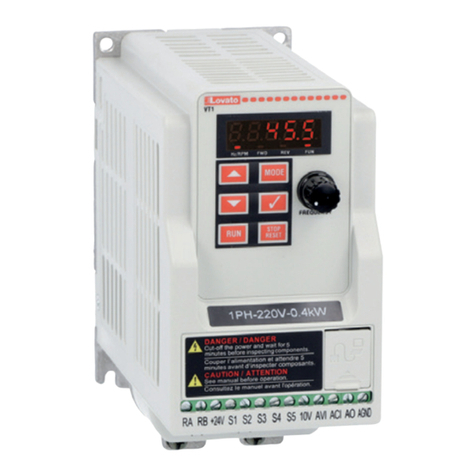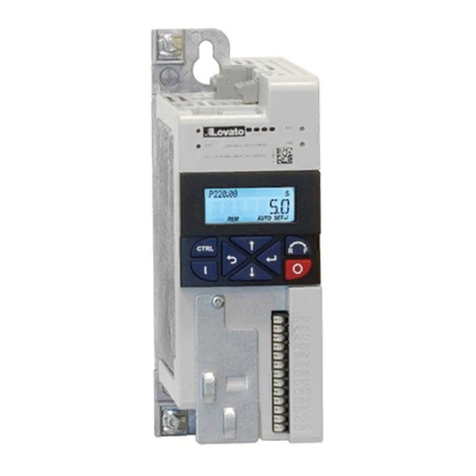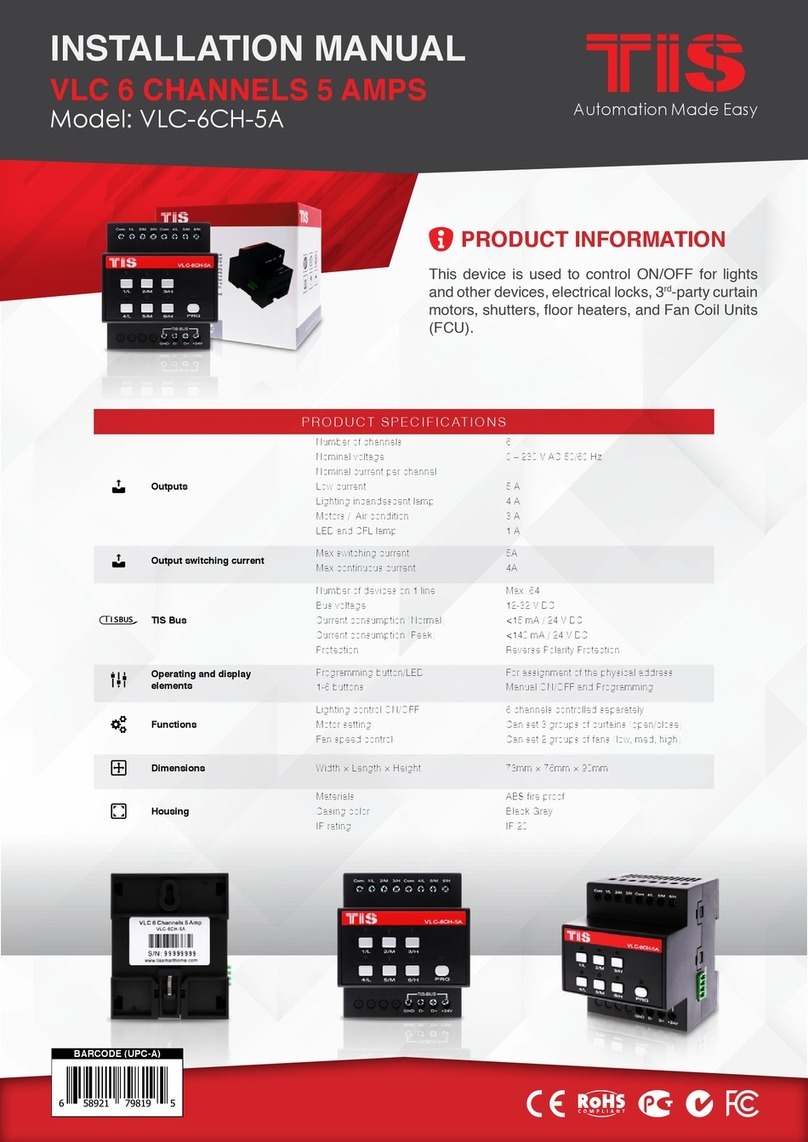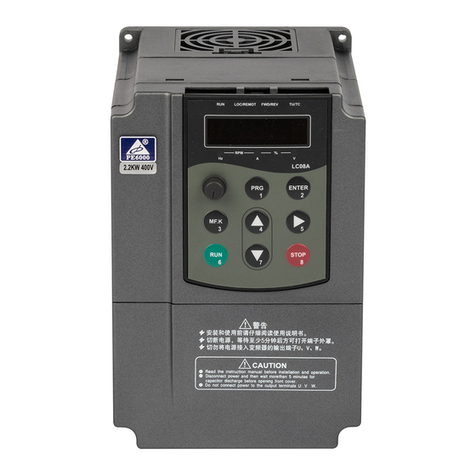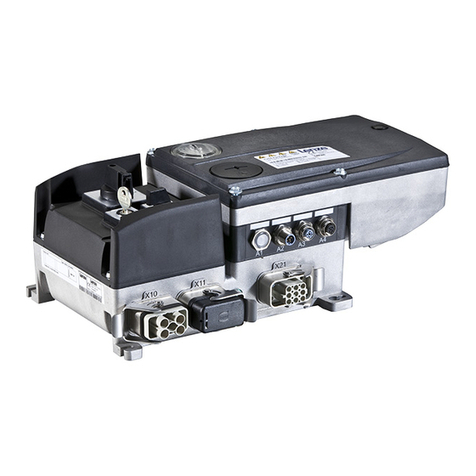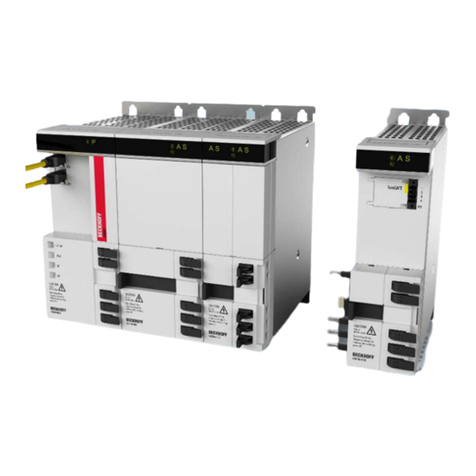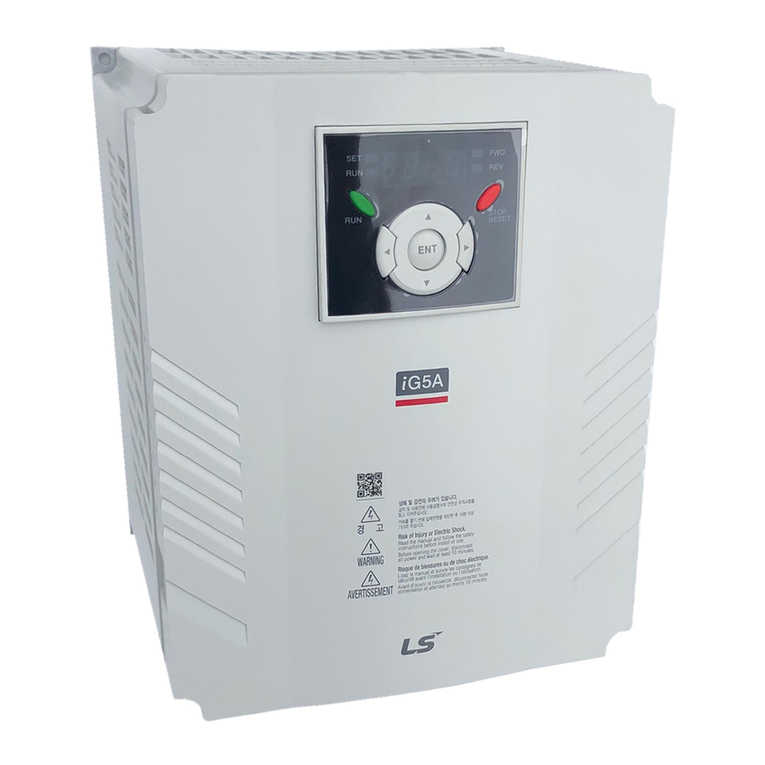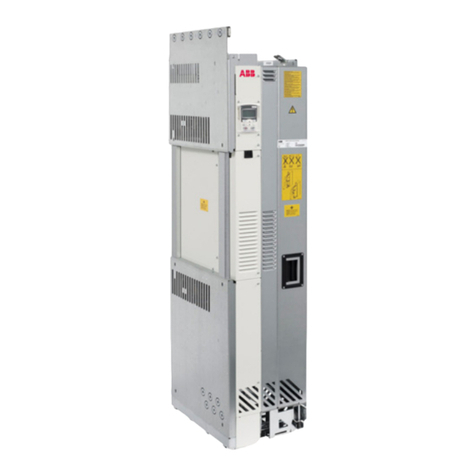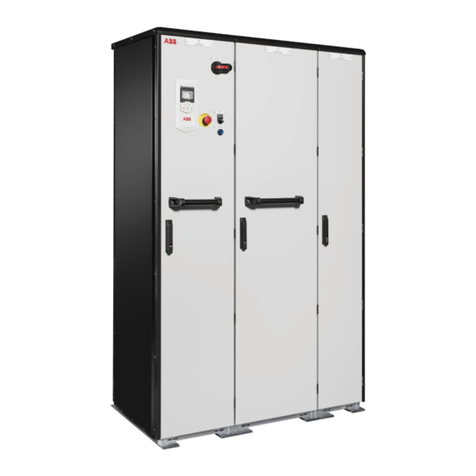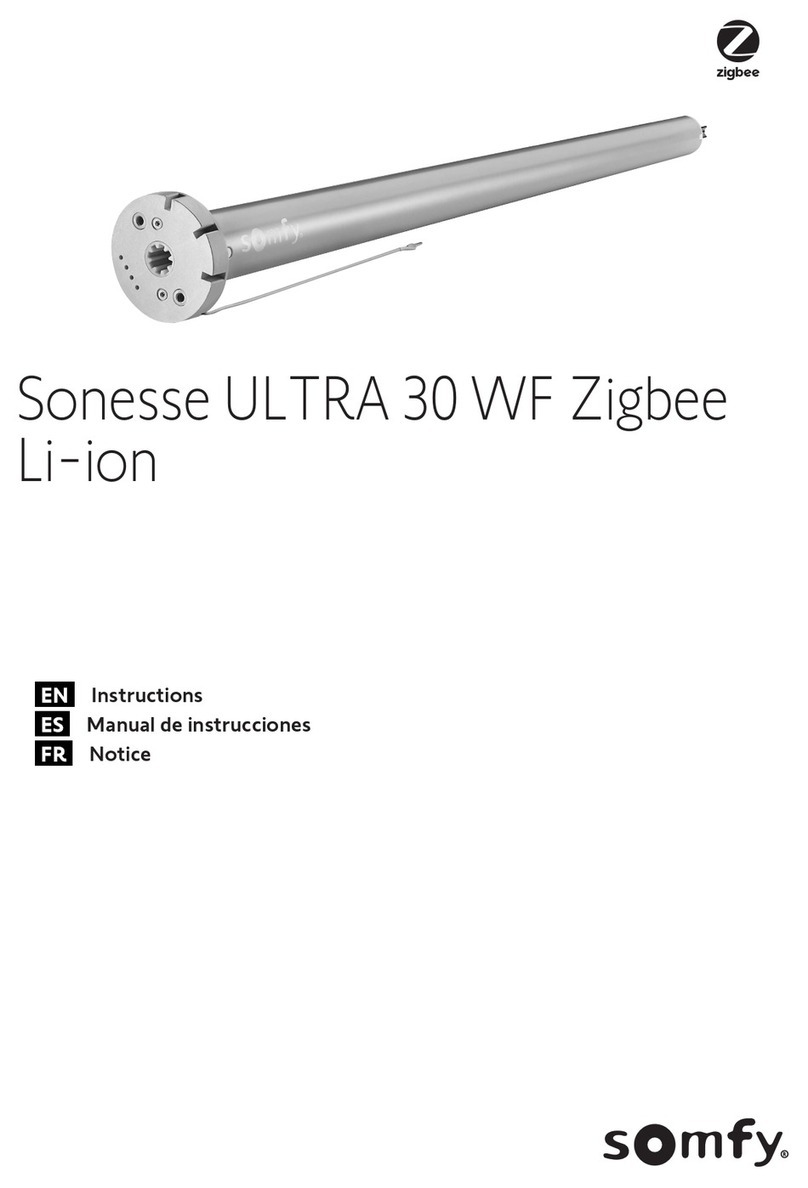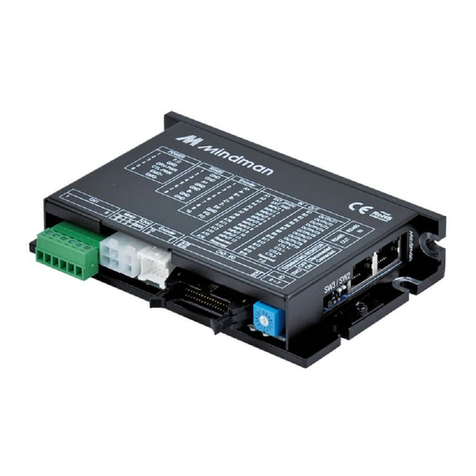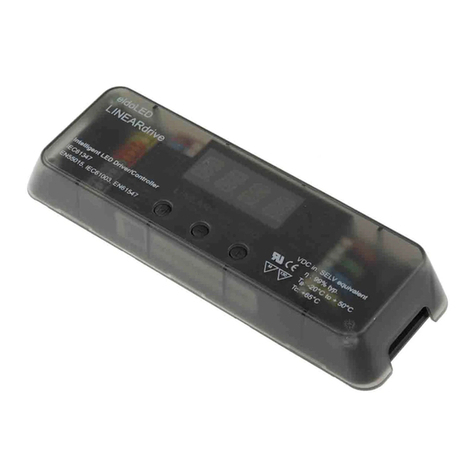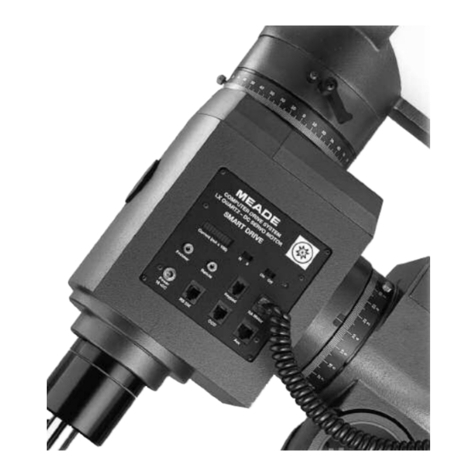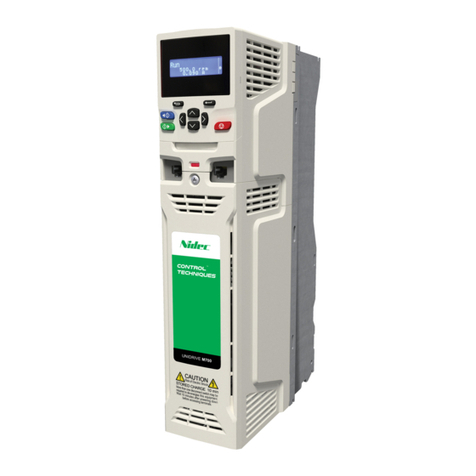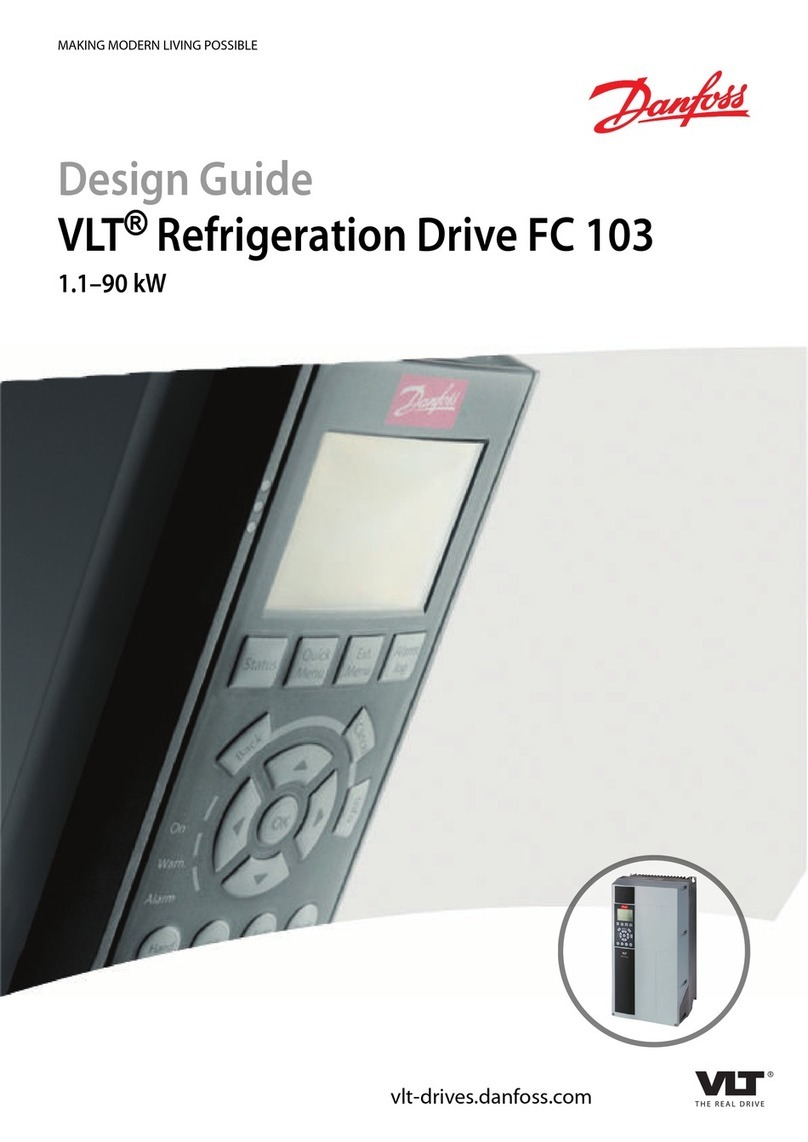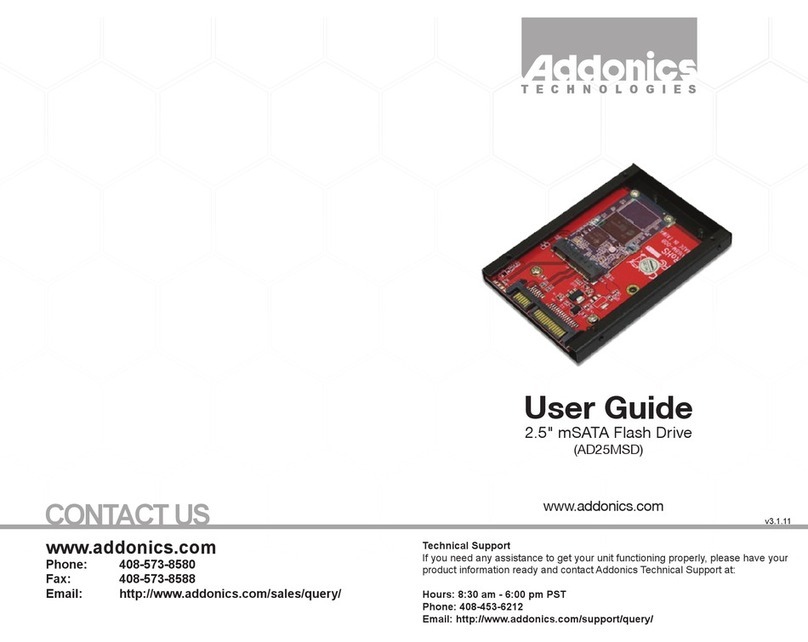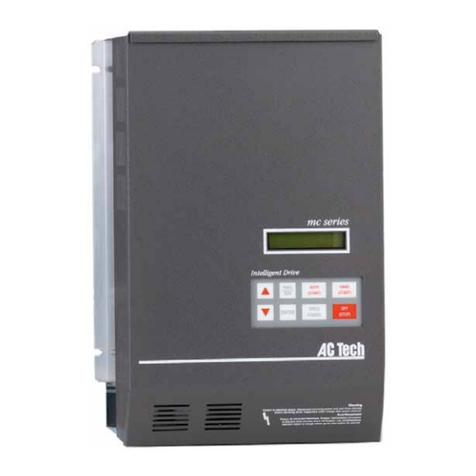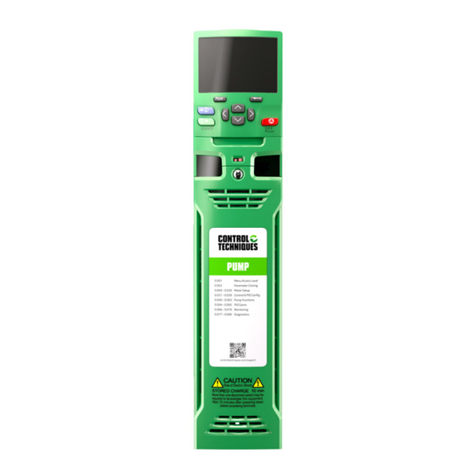LOVATO ELECTRIC VLB Series User manual

I472 GB I 01 19 31100284
1
G
B
LOVATO ELECTRIC S.P.A.
24020 GORLE (BERGAMO) ITALIA
VIA DON E. MAZZA, 12
TEL. 035 4282111
FAX (Nazionale): 035 4282200
FAX (International): +39 035 4282400
E-mail info@
L
ovato
E
lectric.com
Web www.
L
ovato
E
lectric.com
VLB...
GB VARIABLE SPEED DRIVES
Installation manual
I AZIONAMENTI A VELOCITÀ VARIABILE
Manuale di installazione
WARNING!
– Carefully read the manual before the installation or use.
– This equipment is to be installed by qualified personnel, complying to current standards, to avoid
damages or safety hazards.
– Before any maintenance operation on the device, remove all the voltages from measuring and supply inputs and short-
circuit the CT input terminals.
– The manufacturer cannot be held responsible for electrical safety in case of improper use of the equipment.
– Products illustrated herein are subject to alteration and changes without prior notice. Technical data and descriptions in
the documentation are accurate, to the best of our knowledge, but no liabilities for errors, omissions or contingencies
arising there from are accepted.
– A circuit breaker must be included in the electrical installation of the building. It must be installed close by the
equipment and within easy reach of the operator. It must be marked as the disconnecting device of the equipment:
IEC /EN 61010-1 § 6.11.3.1.
– Clean the device with a soft dry cloth; do not use abrasives, liquid detergents or solvents.
ATTENZIONE!
– Leggere attentamente il manuale prima dell’utilizzo e l’installazione.
– Questi apparecchi devono essere installati da personale qualificato, nel rispetto delle vigenti normative
impiantistiche, allo scopo di evitare danni a persone o cose.
– Prima di qualsiasi intervento sullo strumento, togliere tensione dagli ingressi di misura e di alimentazione e
cortocircuitare i trasformatori di corrente.
– Il costruttore non si assume responsabilità in merito alla sicurezza elettrica in caso di utilizzo improprio del dispositivo.
– I prodotti descritti in questo documento sono suscettibili in qualsiasi momento di evoluzioni o di modifiche. Le
descrizioni ed i dati a catalogo non possono pertanto avere alcun valore contrattuale.
– Un interruttore o disgiuntore va compreso nell’impianto elettrico dell’edificio. Esso deve trovarsi in stretta vicinanza
dell’apparecchio ed essere facilmente raggiungibile da parte dell’operatore. Deve essere marchiato come il dispositivo di
interruzione dell’apparecchio: IEC/ EN 61010-1 § 6.11.3.1.
– Pulire l’apparecchio con panno morbido, non usare prodotti abrasivi, detergenti liquidi o solventi.
ATTENTION !
– Lire attentivement le manuel avant toute utilisation et installation.
– Ces appareils doivent être installés par un personnel qualifié, conformément aux normes en vigueur en
matière d'installations, afin d'éviter de causer des dommages à des personnes ou choses.
– Avant toute intervention sur l'instrument, mettre les entrées de mesure et d'alimentation hors tension et court-circuiter
les transformateurs de courant.
– Le constructeur n'assume aucune responsabilité quant à la sécurité électrique en cas d'utilisation impropre du
dispositif.
– Les produits décrits dans ce document sont susceptibles d'évoluer ou de subir des modifications à n'importe quel
moment. Les descriptions et caractéristiques techniques du catalogue ne peuvent donc avoir aucune valeur
contractuelle.
– Un interrupteur ou disjoncteur doit être inclus dans l'installation électrique du bâtiment. Celui-ci doit se trouver tout
près de l'appareil et l'opérateur doit pouvoir y accéder facilement. Il doit être marqué comme le dispositif d'interruption
de l'appareil : IEC/ EN 61010-1 § 6.11.3.1.
– Nettoyer l’appareil avec un chiffon doux, ne pas utiliser de produits abrasifs, détergents liquides ou solvants.
UWAGA!
– Przed użyciem i instalacją urządzenia należy uważnie przeczytać niniejszą instrukcję.
– W celu uniknięcia obrażeń osób lub uszkodzenia mienia tego typu urządzenia muszą być instalowane przez
wykwalifikowany personel, zgodnie z obowiązującymi przepisami.
– Przed rozpoczęciem jakichkolwiek prac na urządzeniu należy odłączyć napięcie od wejść pomiarowych i zasilania oraz zewrzeć
zaciski przekładnika prądowego.
– Producent nie przyjmuje na siebie odpowiedzialności za bezpieczeństwo elektryczne w przypadku niewłaściwego użytkowania
urządzenia.
– Produkty opisane w niniejszym dokumencie mogą być w każdej chwili udoskonalone lub zmodyfikowane. Opisy oraz dane
katalogowe nie mogą mieć w związku z tym żadnej wartości umownej.
– W instalacji elektrycznej budynku należy uwzględnić przełącznik lub wyłącznik automatyczny. Powinien on znajdować się w
bliskim sąsiedztwie urządzenia i być łatwo osiągalny przez operatora. Musi być oznaczony jako urządzenie służące do wyłączania
urządzenia: IEC/ EN 61010-1 § 6.11.3.1.
– Urządzenie należy czyścić miękką szmatką, nie stosować środkow ściernych, płynnych detergentow lub rozpuszczalnikow.
ACHTUNG!
– Dieses Handbuch vor Gebrauch und Installation aufmerksam lesen.
– Zur Vermeidung von Personen- und Sachschäden dürfen diese Geräte nur von qualifiziertem
Fachpersonal und unter Befolgung der einschlägigen Vorschriften installiert werden.
– Vor jedem Eingriff am Instrument die Spannungszufuhr zu den Messeingängen trennen und die Stromwandler
kurzschlieβen.
– Bei zweckwidrigem Gebrauch der Vorrichtung übernimmt der Hersteller keine Haftung für die elektrische Sicherheit.
– Die in dieser Broschüre beschriebenen Produkte können jederzeit weiterentwickelt und geändert werden. Die im Katalog
enthaltenen Beschreibungen und Daten sind daher unverbindlich und ohne Gewähr.
– In die elektrische Anlage des Gebäudes ist ein Ausschalter oder Trennschalter einzubauen. Dieser muss sich in
unmittelbarer Nähe des Geräts befinden und vom Bediener leicht zugänglich sein. Er muss als Trennvorrichtung für das
Gerät gekennzeichnet sein: IEC/ EN 61010-1 § 6.11.3.1.
– Das Gerät mit einem weichen Tuch reinigen, keine Scheuermittel, Flüssigreiniger oder Lösungsmittel verwenden.
ADVERTENCIA
– Leer atentamente el manual antes de instalar y utilizar el regulador.
– Este dispositivo debe ser instalado por personal cualificado conforme a la normativa de instalación
vigente a fin de evitar daños personales o materiales.
– Antes de realizar cualquier operación en el dispositivo, desconectar la corriente de las entradas de alimentación y
medida, y cortocircuitar los transformadores de corriente.
– El fabricante no se responsabilizará de la seguridad eléctrica en caso de que el dispositivo no se utilice de forma
adecuada.
– Los productos descritos en este documento se pueden actualizar o modificar en cualquier momento. Por consiguiente,
las descripciones y los datos técnicos aquí contenidos no tienen valor contractual.
– La instalación eléctrica del edificio debe disponer de un interruptor o disyuntor. Éste debe encontrarse cerca del
dispositivo, en un lugar al que el usuario pueda acceder con facilidad. Además, debe llevar el mismo marcado que el
interruptor del dispositivo (IEC/ EN 61010-1 § 6.11.3.1).
– Limpiar el dispositivo con un trapo suave; no utilizar productos abrasivos, detergentes líquidos ni disolventes.
ПРЕДУПРЕЖДЕНИЕ!
– Прежде чем приступать к монтажу или эксплуатации устройства, внимательно ознакомьтесь с одержанием
настоящего руководства.
– Во избежание травм или материального ущерба монтаж должен существляться только квалифицированным персоналом
в соответствии с действующими нормативами.
– Перед проведением любых работ по техническому обслуживанию устройства необходимо обесточить все измерительные
и питающие входные контакты, а также замкнуть накоротко входные контакты трансформатора тока (ТТ).
– Производитель не несет ответственность за обеспечение электробезопасности в случае ненадлежащего использования
устройства.
– Изделия, описанные в настоящем документе, в любой момент могут подвергнуться изменениям или
усовершенствованиям. Поэтому каталожные данные и описания не могут рассматриваться как действительные с точки
зрения контрактов
– Электрическая сеть здания должна быть оснащена автоматическим выключателем, который должен быть расположен
вблизи оборудования в пределах доступа оператора. Автоматический выключатель должен быть промаркирован как
отключающее устройство оборудования: IEC /EN 61010-1 § 6.11.3.1.
– Очистку устройства производить с помощью мягкой сухой ткани, без применения абразивных материалов, жидких
моющих средств или растворителей.
UPOZORNĚNÍ
– Návod se pozorně pročtěte, než začnete regulátor instalovat a používat.
– Tato zařízení smí instalovat kvalifikovaní pracovníci v souladu s platnými předpisy a normami pro předcházení
úrazů osob či poškození věcí.
– Před jakýmkoli zásahem do přístroje odpojte měřicí a napájecí vstupy od napětí a zkratujte transformátory proudu.
– Výrobce nenese odpovědnost za elektrickou bezpečnost v případě nevhodného používání regulátoru.
– Výrobky popsané v tomto dokumentu mohou kdykoli projít úpravami či dalším vývojem. Popisy a údaje uvedené v katalogu nemají
proto žádnou smluvní hodnotu.
– Spínač či odpojovač je nutno zabudovat do elektrického rozvodu v budově. Musejí být nainstalované v těsné blízkosti přístroje a
snadno dostupné pracovníku obsluhy. Je nutno ho označit jako vypínací zařízení přístroje: IEC/ EN 61010-1 § 6.11.3.1.
– Přístroj čistěte měkkou utěrkou, nepoužívejte abrazivní produkty, tekutá čistidla či rozpouštědla.
DİKKAT!
– Montaj ve kullanımdan önce bu el kitabını dikkatlice okuyunuz.
– Bu aparatlar kişilere veya nesnelere zarar verme ihtimaline karşı yürürlükte olan sistem kurma normlarına göre
kalifiye personel tarafından monte edilmelidirler
– Aparata (cihaz) herhangi bir müdahalede bulunmadan önce ölçüm girişlerindeki gerilimi kesip akım transformatörlerinede kısa
devre yaptırınız.
– Üretici aparatın hatalı kullanımından kaynaklanan elektriksel güvenliğe ait sorumluluk kabul etmez.
– Bu dokümanda tarif edilen ürünler her an evrimlere veya değişimlere açıktır. Bu sebeple katalogdaki tarif ve değerler herhangi bir
bağlayıcı değeri haiz değildir.
– Binanın elektrik sisteminde bir anahtar veya şalter bulunmalıdır. Bu anahtar veya şalter operatörün kolaylıkla ulaşabileceği yakın
bir yerde olmalıdır. Aparatı (cihaz) devreden çıkartma görevi yapan bu anahtar veya şalterin markası: IEC/ EN 61010-1 § 6.11.3.1.
– Aparatı (cihaz) sıvı deterjan veya solvent kullanarak yumuşak bir bez ile siliniz aşındırıcı temizlik ürünleri kullanmayınız.
AVERTIZARE!
– Citiţi cu atenţie manualul înainte de instalare sau utilizare.
– Acest echipament va fi instalat de personal calificat, în conformitate cu standardele actuale, pentru a evita
deteriorări sau pericolele.
– Înainte de efectuarea oricărei operaţiuni de întreţinere asupra dispozitivului, îndepărtaţi toate tensiunile de la intrările de măsurare
şi de alimentare şi scurtcircuitaţi bornele de intrare CT.
– Producătorul nu poate fi considerat responsabil pentru siguranţa electrică în caz de utilizare incorectă a echipamentului.
– Produsele ilustrate în prezentul sunt supuse modificărilor şi schimbărilor fără notificare anterioară. Datele tehnice şi descrierile din
documentaţie sunt precise, în măsura cunoştinţelor noastre, dar nu se acceptă nicio răspundere pentru erorile, omiterile sau
evenimentele neprevăzute care apar ca urmare a acestora.
– Trebuie inclus un disjunctor în instalaţia electrică a clădirii. Acesta trebuie instalat aproape de echipament şi într-o zonă uşor
accesibilă operatorului. Acesta trebuie marcat ca fiind dispozitivul de deconectare al echipamentului: IEC/EN 61010-1 § 6.11.3.1.
– Curăţaţi instrumentul cu un material textil moale şi uscat; nu utilizaţi substanţe abrazive, detergenţi lichizi sau solvenţi.

I472 GB I 01 19 31100284
2
G
B
CONTENTS
1 Safety information ................................................................................................................................................................................................. 3
1.1 Residual hazards .......................................................................................................................................................................................................................................................... 3
1.2 Intended use ................................................................................................................................................................................................................................................................. 3
2 Product description ............................................................................................................................................................................................... 3
3 Electrical installation ............................................................................................................................................................................................. 5
3.1 Connection plan ............................................................................................................................................................................................................................................... 5
3.2 Fuses and cable cross-sections .................................................................................................................................................................................................................................... 6
3.3 DC-Bus voltage operative range ................................................................................................................................................................................................................................... 11
3.4 Data of control connections .......................................................................................................................................................................................................................................... 12
3.5 Modbus connection .................................................................................................................................................................................................................................................... 15
3.5.1 Connection plan ....................................................................................................................................................................................................................................... 15
3.5.2 Terminal data ........................................................................................................................................................................................................................................... 15
3.5.3 Basic network settings ............................................................................................................................................................................................................................. 15
3.6 Connection of the safety module .................................................................................................................................................................................................................................. 16
3.6.1 Important notes ....................................................................................................................................................................................................................................... 16
3.6.2 Connection plan ....................................................................................................................................................................................................................................... 16
3.6.3 Terminal data ........................................................................................................................................................................................................................................... 16
4 Commissioning .................................................................................................................................................................................................... 17
4.1 Important notes ............................................................................................................................................................................................................................................................ 17
4.2 Before initial switch-on ................................................................................................................................................................................................................................................. 17
4.3 Initial switch-on / functional test .................................................................................................................................................................................................................................. 17
5 Quick guide for configuration of VLB3 parameters ........................................................................................................................................................... 18
5.1. Navigation in the menu ................................................................................................................................................................................................................................................. 18
5.2. Reset parameters to default .......................................................................................................................................................................................................................................... 19
5.3. Command the run/stop of the motor ............................................................................................................................................................................................................................ 20
5.3.1 2-wires control from the flexible I/O terminal block ................................................................................................................................................................................. 20
5.3.2 From keypad ............................................................................................................................................................................................................................................ 20
5.3.3 3-wires control from flexible I/O terminal block ....................................................................................................................................................................................... 20
5.4. Frequency adjustment .................................................................................................................................................................................................................................................. 21
5.4.1 From keypad ............................................................................................................................................................................................................................................ 21
5.4.2 From external potentiometer ................................................................................................................................................................................................................... 21
5.4.3 From analog input signal type 0-10V ....................................................................................................................................................................................................... 21
5.4.4 From analog input signal type 4-20mA .................................................................................................................................................................................................... 22
5.4.5 With preset frequency setpoints .............................................................................................................................................................................................................. 22
5.4.6 From motor potentiometer (MOP) ........................................................................................................................................................................................................... 23
5.4.7 With Modbus communication protocol ................................................................................................................................................................................................... 23
5.4.8 PID Control - Setpoint adjusted with keypad and feedback signal type 0-10V ......................................................................................................................................... 23
5.4.9 PID Control - Setpoint adjusted with keypad and feedback signal type 4-20mA ..................................................................................................................................... 23
5.5. Motor parameters .................................................................................................................................................................................................................................................... 24
5.6. Additional functions .................................................................................................................................................................................................................................................... 25
5.6.1 Configuration of the relay output function ............................................................................................................................................................................................... 25
5.6.2 Configuration of the DO1 digital output function ..................................................................................................................................................................................... 25
5.6.3 Configuration of the AO1 analog output function .................................................................................................................................................................................... 26
5.6.4 Enable of the start at power-up function (auto-restart) ............................................................................................................................................................................ 26
5.6.5 Command of digital inputs from PLC ...................................................................................................................................................................................................... 27
5.6.6 Configuration of the automatic (PID) / manual (frequency regulation) mode .......................................................................................................................................... 27
5.6.7 Control of the variable speed drive by EXCRDU1 remote keypad ............................................................................................................................................................ 29
5.6.8 Common error codes .............................................................................................................................................................................................................................. 30
6 Technical data ..................................................................................................................................................................................................... 31
6.1 Standards and operating conditions ............................................................................................................................................................................................................................. 31
6.2 Rated data .................................................................................................................................................................................................................................................................... 32
7 Dimensions and mechanical installation ...................................................................................................................................................................... 74

I472 GB I 01 19 31100284
3
G
B
1 SAFETY INFORMATION
1.1 RESIDUAL HAZARDS
The user must take the residual hazards mentioned into consideration in the risk assessment for his/her machine/system.
If the above is disregarded, this can lead to severe injuries to persons and damage to material assets!
PRODUCT
Observe the warning labels on the product!
ICON DESCRIPTION
Electrostatic sensitive devices
Before working on the drive, the staff must ensure to be free of electrostatic charge!
Dangerous electrical voltage
Before working on the drive, check whether all power connections are dead! After mains OFF, power connections X100 and X105 carry a dangerous electrical
voltage for the time specified on the drive!
High leakage current
Carry out fixed installation and PE connection in compliance with EN 61800-5-1 or EN 60204-1!
Hot surface
Use personal protective equipment or wait until devices have cooled down!
MOTOR
If there is a short circuit of two power transistors, a residual movement of up to 180°/number of pole pairs can occur at the motor! (For 4-pole motor: residual movement max. 180°/2 = 90°).
This residual movement must be taken into consideration by the user for his/her risk assessment.
1.2 INTENDED USE
The product:
– must only be actuated under the operating conditions prescribed in this documentation.
– meets the protection requirements of 2014/35/EU: Low-Voltage Directive.
– is not a machine in terms of 2006/42/EC: Machinery Directive.
– is not a household appliance, but is only designed as component for commercial or professional use in terms of EN 61000-3-2.
2 PRODUCT DESCRIPTION

I472 GB I 01 19 31100284
4
G
B
CONNECTION TO THE IT SYSTEM
Internal components have earth potential if the IT screws are not removed.
Consequence: the monitoring functions of the IT system respond.
Before connection to an IT system be absolutely sure to remove the IT screws.
Mechanical installation - Size from 55kW to 110kW.
Installation of the motor cable shield.

I472 GB I 01 19 31100284
G
B
3 ELECTRICAL INSTALLATION
3.1 CONNECTION PLAN
5

I472 GB I 01 19 31100284
6
G
B
3.2 FUSES AND CABLE CROSS-SECTIONS
Rated power kW 0.4 0.75
Cable installation in compliance with EN 60204-1
Laying system B2
Operation Without mains choke
Fuse
Characteristics gG/gL or gRL
Max. rated current A 10
Circuit breaker
Characteristics B
Max. rated current A 10
Operation With mains choke
Fuse
Characteristics gG/gL or gRL
Max. rated current A 10
Circuit breaker
Characteristics B
Max. rated current A 10
Earth-leakage circuit breaker
3-phase mains connection ≥30 mA, type B
Mains connection
Connection X100
Connection type Screw terminal
Min. cable cross-section mm² 1
Max. cable cross-section mm² 2.5
Stripping length mm 8
Tightening torque Nm 0.5
Required tool 0.5 x 3.0
Motor connection
Connection X105
Connection type Screw terminal
Min. cable cross-section mm² 1
Max. cable cross-section mm² 2.5
Stripping length mm 8
Tightening torque Nm 0.5
Required tool 0.5 x 3.0
PE connection
Connection PE
Connection type PE screw
Min. cable cross-section mm² 1
Max. cable cross-section mm² 6
Stripping length mm 10
Tightening torque Nm 2
Required tool Torx 20

I472 GB I 01 19 31100284
G
B
7
Rated power kW 1.5 2.2 4
Cable installation in compliance with EN 60204-1
Laying system B2
Operation Without mains choke
Fuse
Characteristics gG/gL or gRL
Max. rated current A 16 16 25
Circuit breaker
Characteristics B
Max. rated current A 16 16 25
Operation With mains choke
Fuse
Characteristics gG/gL or gRL
Max. rated current A 16 16 25
Circuit breaker
Characteristics B
Max. rated current A 16 16 25
Earth-leakage circuit breaker
3-phase mains connection ≥30 mA, type B ≥300 mA, type B
Mains connection
Connection X100
Connection type Screw terminal Screw terminal
Min. cable cross-section mm² 1 1.5
Max. cable cross-section mm² 2.5 6
Stripping length mm 8 9
Tightening torque Nm 0.5
Required tool 0.5 x 3.0 0.6 x 3.5
Motor connection
Connection X105
Connection type Screw terminal Screw terminal
Min. cable cross-section mm² 1 1.5
Max. cable cross-section mm² 2.5 6
Stripping length mm 8 9
Tightening torque Nm 0.5
Required tool 0.5 x 3.0 0.6 x 3.5
PE connection
Connection PE
Connection type PE screw
Min. cable cross-section mm² 1 1.5
Max. cable cross-section mm² 6 6
Stripping length mm 10 10
Tightening torque Nm 2 2
Required tool Torx 20

I472 GB I 01 19 31100284
G
B
8
Rated power kW 5.5 7.5 11 15
Cable installation in compliance with EN 60204-1
Laying system B2
Operation Without mains choke
Fuse
Characteristics gG/gL or gRL
Max. rated current A 25 32 32 63
Circuit breaker
Characteristics B
Max. rated current A 25 32 32 63
Operation With mains choke
Fuse
Characteristics gG/gL or gRL
Max. rated current A 25 32 32 63
Circuit breaker
Characteristics B
Max. rated current A 25 32 32 63
Earth-leakage circuit breaker
3-phase mains connection ≥300 mA, type B
Mains connection
Connection X100
Connection type Screw terminal
Min. cable cross-section mm² 1.5
Max. cable cross-section mm² 6 16 35
Stripping length mm 9 11 18
Tightening torque Nm 0.5 1.2 3.8
Required tool 0.6 x 3.5 0.8 x 4.0 0.8 x 5.5
Motor connection
Connection X105
Connection type Screw terminal
Min. cable cross-section mm² 1.5
Max. cable cross-section mm² 6 16 35
Stripping length mm 9 11 18
Tightening torque Nm 0.5 1.2 3.8
Required tool 0.6 x 3.5 0.8 x 4.0 0.8 x 5.5
PE connection
Connection PE
Connection type PE screw
Min. cable cross-section mm² 1.5 1.5 1.5
Max. cable cross-section mm² 6 16 25
Stripping length mm 10 11 16
Tightening torque Nm 2 3.4 4
Required tool Torx 20 PZ2

I472 GB I 01 19 31100284
9
G
B
Rated power kW 18.5 22 30 37
Cable installation in compliance with EN 60204-1
Laying system B2 C
Operation Without mains choke
Fuse
Characteristics gG/gL or gRL -
Max. rated current A 63 - - -
Circuit breaker
Characteristics B -
Max. rated current A 63 - - -
Operation With mains choke
Fuse
Characteristics gG/gL or gRL
Max. rated current A 63 63 80 100
Circuit breaker
Characteristics B
Max. rated current A 63 63 80 100
Earth-leakage circuit breaker
3-phase mains connection ≥300 mA, type B
Mains connection
Connection X100
Connection type Screw terminal
Min. cable cross-section mm² 1.5 10
Max. cable cross-section mm² 35 50
Stripping length mm 18 19
Tightening torque Nm 3.8 4
Required tool 0.8 x 5.5 Allen key 4.0
Motor connection
Connection X105
Connection type Screw terminal
Min. cable cross-section mm² 1.5 10
Max. cable cross-section mm² 35 50
Stripping length mm 18 19
Tightening torque Nm 3.8 4
Required tool 0.8 x 5.5 Allen key 4.0
PE connection
Connection PE
Connection type PE screw
Min. cable cross-section mm² 1.5
Max. cable cross-section mm² 25
Stripping length mm 16
Tightening torque Nm 4
Required tool PZ2

I472 GB I 01 19 31100284
10
G
B
Rated power kW 45 55 75
Cable installation in compliance with EN 60204-1
Laying system C F
Operation
Fuse
Characteristics -
Max. rated current A - - -
Circuit breaker
Characteristics -
Max. rated current A - - -
Operation With mains choke
Fuse
Characteristics gG/gL or gRL gR
Max. rated current A 125 160
Circuit breaker
Characteristics B -
Max. rated current A 125 - -
Earth-leakage circuit breaker
3-phase mains connection ≥300 mA, type B
Mains connection
Connection X100
Connection type Screw terminal
Min. cable cross-section mm² 10 25
Max. cable cross-section mm² 50 95
Stripping length mm 19 22
Tightening torque Nm 4 10
Required tool Allen key 4.0 Allen key 6.0
Motor connection
Connection X105
Connection type Screw terminal
Min. cable cross-section mm² 10 25
Max. cable cross-section mm² 50 95
Stripping length mm 19 22
Tightening torque Nm 4 10
Required tool Allen key 4.0 Allen key 6.0
PE connection
Connection PE
Connection type PE screw
Min. cable cross-section mm² 1.5 4
Max. cable cross-section mm² 25 25
Stripping length mm 16 16
Tightening torque Nm 4 4
Required tool PZ2 PZ2

I472 GB I 01 19 31100284
G
B
11
Rated power kW 90 110
Cable installation in compliance with EN 60204-1
Laying system F
Operation
Fuse
Characteristics ––
Max. rated current A ––
Circuit breaker
Characteristics ––
Max. rated current A ––
Operation With mains choke
Fuse
Characteristics gR
Max. rated current A 300
Circuit breaker
Characteristics ––
Max. rated current A ––
Earth-leakage circuit breaker
3-phase mains connection ≥300 mA, type B
Mains connection
Connection X100
Connection type Screw terminal
Min. cable cross-section mm² ––
Max. cable cross-section mm² 150
Stripping length mm 28
Tightening torque Nm 18
Required tool Allen key 8.0
Motor connection
Connection X105
Connection type Screw terminal
Min. cable cross-section mm² ––
Max. cable cross-section mm² 150
Stripping length mm 28
Tightening torque Nm 18
Required tool Allen key 8.0
PE connection
Connection PE
Connection type PE bolt
Min. cable cross-section mm² ––
Max. cable cross-section mm² 150
Stripping length mm ––
Tightening torque Nm 10
Required tool Key 13
3.3 DC-BUS voltage operative range
Rated mains voltage DC-Bus voltage range
400...480VAC 480...750VDC

I472 GB I 01 19 31100284
G
B
12
3.4 Data of control connections
DIGITAL INPUTS
Switching type PNP, NPN Parameterisable
PNP switching level
LOW V < +5 IEC 61131−2, type 1
HIGH V > +15
NPN switching level
LOW V > +15
HIGH V < +5
Input resistance kΩ4.6
Cycle time ms 1 can be changed by software filtering
Electric strength of external volt- age V ± 30
Frequency input
Connection X3/DI3, X3/DI4
Frequency range kHz 0 … 100
Encoder input
Type Incremental HTL encoder
Two-track connection X3/DI3 Track A
X3/DI4 Track B
Frequency range kHz 0...100
DIGITAL OUTPUTS
Switching level
LOW V < +5 IEC 61131−2, type 1
HIGH V > +15
Max. output current mA 100 Total current for DO1 and 24V
Cycle time ms 1
Short-circuit strength Unlimited period
Electric strength of external voltage V ± 30
Polarity reversal protection Integrated freewheeling diode for switchingthe inductive load
Overload behaviour Reduced voltage or periodic switch-off/on
Reset or switch-on behaviour Output is switched off LOW
ANALOG INPUTS
Cycle time ms 1
Resolution of A/D converter Bit 12
Operation as voltage input
Connection designation X3/AI1, X3/AI2
Input voltage DC V -10 … 10
Input resistance kΩ70
Accuracy mV ± 50 Typical
Input voltage in case of open circuit V - 0.2...0.2 Display "0"
Electric strength of external voltage V ± 24
Operation as current input
Connection designation X3/AI1, X3/AI2
Input current mA 0...20
4...20 open-circuit monitored
Accuracy mA ± 0.1 Typical
Input current in case of open circuit mA < 0.1 Display "0"
Input resistance Ω< 250
Electric strength of external voltage V ± 24

I472 GB I 01 19 31100284
G
B
13
ANALOG OUTPUTS
Short-circuit strength Unlimited period
Electric strength of external voltage V + 24V
Operation as voltage output
Resolution of D/A converter Bit 12
Output voltage DC V 0 ... 10
Max. output current mA 5
Max. capacitive load μF 1
Accuracy mV ± 100 Typical
Operation as current output
Output current mA 0 ... 20
4 … 20 open-circuit monitored
Accuracy mA ± 0.3 Typical
10-V OUTPUT
Use Primarily for the supply of a potentiometer (1 ... 10 kΩ)
Output voltage DC
Typical V 10
Accuracy mV ± 100
Max. output current mA 10
Max. capacitive load μF 1
Short-circuit strength Unlimited period
Electric strength of external voltage V + 24
24-V INPUT
Use Input for mains-independent DC supply of the control
electronics (incl. communication)
Input voltage DC
Typical V 24 IEC 61131-2
Range V 19.2 … 28.8
Input power
Typical W 3.6
Max. W 6 Depending on the use and state of inputs and outputs.
Input current
Typical A 0.150
Max. A 1.0 When switching on for 50 ms
Capacity to be charged μF 440
Polarity reversal protection When polarity is reversed: No function and no destruction
Suppression of voltage pulses Suppressor diode 30 V, bidirectional
Power supply unit SELV/PELV Externally to create a mains-independent DC supply
Max. current A 8.0 While looping-through
24-V OUTPUT
Use Primarily for the supply of digital inputs
Output voltage DC
Typical V 24
Range V 16 … 28
Max. output current mA 100 Total current for DO... and 24V
Short-circuit strength Unlimited period
Electric strength of external voltage V + 30
Excess current release Automatically resettable

I472 GB I 01 19 31100284
G
B
14
Relay output
Relay is not suitable for direct switching of an electromechanical holding brake! Use a corresponding suppressor circuit in case of an inductive or capacitive load!
Connection Terminal X9: COM Centre contact (common)
Terminal X9: NC Normally-closed contact
Terminal X9: NO Normally-open contact
Minimum DC contact load
Voltage V 10 A correct switching of the relay contacts needs both values
Current mA 10 to be exceeded simultaneously.
Switching voltage/switching current
Maximum AC 240 V A 3 According to UL: General Purpose
DC 24 V A 2 According to UL: Resistive
DC 240 V A 0.16
i
X9
COM
NC
NO
PTC input
In the Lovato Electric setting, motor temperature monitoring is activated! In the delivery status, there is a wire jumper between the terminals T1 and T2.
Before connecting a thermal sensor, remove the wire jumper.
Use Connection of PTC or thermal contact
Connection Terminal X109: T1
Terminal X109: T2
Sensor types PTC single sensor (DIN 44081)
PTC triple sensor (DIN 44082)
Thermal contact
i
X109
T1
T2
Terminal description Relay output PTC input Control terminals
Connection X9 X109 X3
Connection type Screw terminal Screw terminal Spring terminal
Min. cable cross-section mm20.5 0.5 0.5
Max. cable cross-section mm21.5 1.5 1.5
Stripping length mm 6 6 9
Tightening torque Nm 0.2 0.2 ––
Required tool 0.4x2.5 0.4x2.5 0.4x2.5
Data of control connections

I472 GB I 01 19 31100284
G
B
15
3.5 MODBUS CONNECTION
3.5.1 Connection plan
Wiring example: Modbus network
3.5.2 Terminal data
Terminal description Modbus
Connection X216
Connection type Spring terminal
Min. cable cross-section mm20.5
Max. cable cross-section mm21.5
Stripping length mm 10
Tightening torque Nm ––
Required screwdriver 0.4x2.5
3.5.3 Basic network settings
The network must be terminated with a 120Ωresistor at the physically first and last node.
Set the “R” switch to ON at these nodes.
Use the DIP switch to set node address and baud rate and to activate the integrated bus terminating resistor.
i
Bus termination Baud rate Parity Modbus node address
R c b a 128 64 32 16 8 4 2 1
OFF n.c. OFF OFF OFF OFF OFF OFF OFF OFF OFF OFF
Inactive Automatic detection Automatic detection Value from parameter
ON ON ON Node address - example:
Active Value from parameter Value from parameter OFF OFF OFF ON OFF ON ON ON
Node address = 16 + 4 + 2 + 1 = 23
Node address > 247: value from parameter
Printed in bold = Factory setting

I472 GB I 01 19 31100284
G
B
16
3.6 CONNECTION OF THE SAFETY MODULE
3.6.1 Important notes
DANGER!
Improper installation of the safety engineering system can cause an uncontrolled starting action of the drives.
Possible consequences: death or severe injuries.
– Safety engineering systems may only be installed and commissioned by qualified and skilled personnel.
– All control components (switches, relays, PLC, ...) and the control cabinet must comply with the requirements of the EN ISO 13849-1 and the EN ISO 13849-2.
– Switches, relays with at least IP54 enclosure.
– Control cabinet with at least IP54 enclosure.
– It is essential to use insulated wire end ferrules for wiring.
– All safety relevant cables outside the control cabinet must be protected, e.g. by means of a cable duct.
– Ensure that no short circuits can occur according to the specifications of the EN ISO 13849-2.
– All further requirements and measures can be obtained from the EN ISO 13849−1 and the EN ISO 13849-2.
– If an external force acts upon the drive axes, additional brakes are required. Please observe that hanging loads are subject to the force of gravity!
– The user has to ensure that the drive will only be used in its intended application within the specified environmental conditions. This is the only way to comply with the declared safety-related
characteristics.
DANGER!
With the "Safe torque off" (STO) function, no "emergency stop" in terms ‑EN 60204-1 can be executed without additional measures. There is no isolation between the motor and drive, no service
switch or maintenance switch!
Possible consequence: death or severe injuries.
– "Emergency stop" requires electrical isolation, e.g. by a central mains contactor.
DANGER!
Automatic restart if the request of the safety function is deactivated. Possible consequences: death or severe injuries.
– You must provide external measures according to EN ISO 13849−1 which ensure that the drive only restarts after a confirmation.
NOTICE!
Overvoltage.
Destruction of the safety component.
– The maximum voltage (maximum rated) at the safety inputs is 32 V DC. The user must make provisions to avoid that this voltage is exceeded.
3.6.2 Connection plan
S1 safety switching device
S2 passive sensor
S1 active sensor - example lightgrid
Passive sensors Active sensors
3.6.3 Terminal Data
Terminal description Safety STO
Connection X1
Connection type Spring terminal
Min. cable cross-section mm20.5
Max. cable cross-section mm21.5
Stripping length mm 9
Tightening torque Nm 0.2
Required screwdriver 0.4x2.5
X1 Specification Unit min. typ. max.
SIA, SIB LOW signal V -3 0 +5
HIGH signal V +15 +24 +30
Running time ms 3
Input current SIA mA 10 14
Input current SIB mA 7 12
Input peak current mA 100
Tolerated test pulse ms 1
Switch-off time ms 50
Permissible distance of the test pulses ms 10
GS Reference potential for SIA and SIB
S1
S2 S1

I472 GB I 01 19 31100284
17
G
B
4 COMMISSIONING
4.1 IMPORTANT NOTES
Incorrect settings during commissioning may cause unexpected and dangerous motor and system movements.
Possible consequence: death, severe injuries or damage to material assets.
– Clear hazardous area.
– Observe safety instructions and safety clearances.
4.2 BEFORE INITIAL SWITCH-ON
Prevent injury to persons and damage to material assets. Check the following before switching on the mains voltage:
– Is the wiring complete and correct?
– Are there no short circuits and earth faults?
– Is the motor circuit configuration (star/delta) adapted to the output voltage of the drive?
– Is the motor connected in-phase (direction of rotation)?
– Does the "emergency stop" function of the entire plant operate correctly?
4.3 INITIAL SWITCH-ON / FUNCTIONAL TEST
Target: achieve rotation of the motor connected to the drive as quickly as possible. Requirements:
– The connected motor matches the drive in terms of power.
– The parameter settings comply with the delivery status.
1. Preparation:
1. Wiring of power terminals. (Chapter 4.2 Electrical installation).
2. Wire digital inputs X3/DI1 (start enable), X3/DI3 (reversal of rotation direction), and X3/DI4 (preset setpoint 20 Hz).
3. Do not connect terminal X3/AI1 (analog setpoint selection) or connect it to GND.
2. Switch on mains and check readiness for operation:
1. Switch on mains voltage.
2. Observe LED status displays "RDY" and "ERR" on the front of the drive:
a) If the blue "RDY" LED is blinking and the red "ERR" LED is off, the drive is ready for operation. The controller is inhibited.
You can now start the drive.
b) If the red "ERR" LED is lit permanently, a fault is pending.
Eliminate the fault before you carry on with the functional test.
X3
4
LED STATUS DISPLAYS
"RDY" LED (blue) "ERR" LED (red) Status/meaning
off off No supply voltage.
blinking (1 Hz) off Safe torque off (STO) active.
blinking fast (4 Hz) Safe torque off (STO) active. Warning active.
blinking (2 Hz) off Drive inhibited.
lit every 1.5 s for a short time Drive inhibited, no DC-bus voltage.
blinking fast (4 Hz) Drive inhibited, warning active.
on Drive inhibited, fault active.
on off Drive enabled. The drive rotates according to the setpoint specified.
blinking fast (4 Hz) Drive enabled, warning active.
blinking (1 Hz) Drive enabled, quick stop as response to a fault active.
Carrying out the functional test
1. Start drive:
1. Enable drive: X3/DI1 = HIGH.
a) If the drive is equipped with an integrated safety system: X1/SIA = HIGH and X1/SIB = HIGH.
2. Activate preset setpoint 1 (20 Hz) as speed setpoint: X3/DI4 = HIGH.
The drive rotates with 20 Hz.
3. Optional: activate the function for the reversal of rotation direction.
a) X3/DI3 = HIGH.
The drive rotates with 20 Hz in the opposite direction.
b) Deactivate the function for the reversal of rotation direction again: X3/DI3 = LOW.
Speed characteristic (example)
2. Stop drive:
1. Deactivate preset setpoint 1 again: X3/DI4 = LOW.
2. Inhibit drive again: X3/DI1 = LOW.
The functional test is completed.
Drive follows the frequency setpoint

I472 GB I 01 19 31100284
18
G
B
5 QUICK GUIDE FOR CONFIGURATION OF VLB3 PARAMETERS
HOW DO YOU WANT TO COMMAND
THE RUN AND STOP OF THE MOTOR?
See chapter 5.3
HOW DO YOU WANT TO ADJUST
THE FREQUENCY OF THE MOTOR?
See chapter 5.4
SET THE MOTOR PARAMETERS
See chapter 5.5
LEARN HOW TO NAVIGATE THE MENU
See chapter 5.1
RESET PARAMETERS TO
DEFAULT
See chapter 5.2
CONFIGURE ADDITIONAL FUNCTIONS
See chapter 5.6
Steps to follow for the configuration of the variable speed drive:
5.1 NAVIGATION IN THE MENU
Function of the keypad keys
Navigate: select group/parameter.
Change parameter setting.
Pressed shortly: enter in the sub parameter level.
Keep pressed for more than 3 sec to save parameter
settings in the memory.
Exit from the menu/parameter
Stop motor
Run motor
Activate full keypad control
(available from firmware version 4.1)
Reversal of rotation direction
(available from firmware version 4.1)

I472 GB I 01 19 31100284
19
G
B
Example of navigation in the menu of the VSD and modification of a parameter.
Back to the previous level
Back to the previous level
Back to the previous level
Back to the previous level
without saving
Enter in parametrisation mode
Enter in the group
Confirm the parameter to modify
Confirm the sub-parameter
Confirm the modify
Keep pressed for 3 seconds to save all
the parameters modified.
Select the group
Select the parameter
Select the sub-parameter
Modify the value of the parameter
5.2 RESET PARAMETERS TO DEFAULT
To reset all the parameters to factory settings follow this procedure:
– Set the parameter P700.01 = 1 (load default settings)
– Press the button several times to exit from the programming menu until it appears the text STOP.
– Keep pressed the button for 3 seconds until it appears the text “P.SAVED”, which indicates the saving of the parameters.

I472 GB I 01 19 31100284
20
G
B
5.3 COMMAND THE RUN/STOP OF THE MOTOR
5.3.1 2-wires control from the flexible I/O terminal block
5.3.2 From keypad
Parameter Function Setting Description
P400.01 VSD enable 1 VSD always enabled (default setting)
P400.02 Run/stop command 11 Run/stop command from digital input DI1 (connected between terminals DI1-24V)
NO
COM
NC
24E
GND
AI1
AI2
AO1
10V
24V
DI1
DI2
DI3
DI4
DI5
DO1
GND
5.3.3 3-wires control from flexible I/O terminal block
Parameter Function Setting Description
P400.01 VSD enable 1 VSD always enabled (default setting)
P400.02 Run/stop command 11 Run/stop command is given by DI1 (NC contact). It serves as start enable for the
function “Start forward” (P400.06).
P400.06 Start forward command 12 Start forward command from DI2 (NO contact)
NO
COM
NC
24E
GND
AI1
AI2
AO1
10V
24V
DI1
DI2
DI3
DI4
DI5
DO1
GND
Parameter Function Setting Description
P400.01 VSD enable 1 VSD always enabled (default setting)
P400.12 Keypad control 1 Activate keypad as control source
P400.02 Run/stop command 1 Constant true (run/stop command is managed by keypad)
Start
Stop
Stop
24E
24E
Run/Stop
Start forward
Other manuals for VLB Series
1
This manual suits for next models
18
Table of contents
Languages:
Other LOVATO ELECTRIC DC Drive manuals

